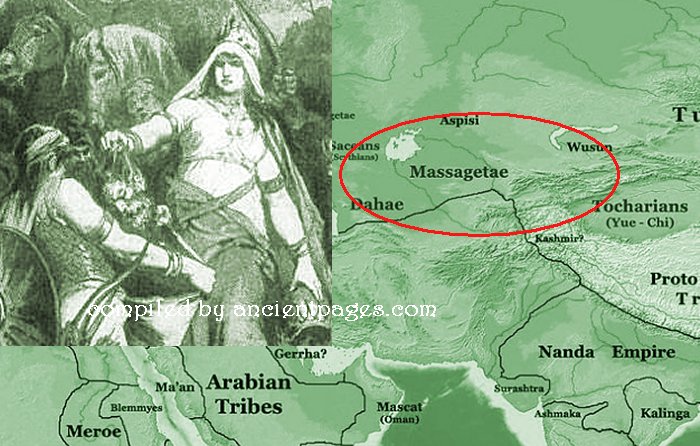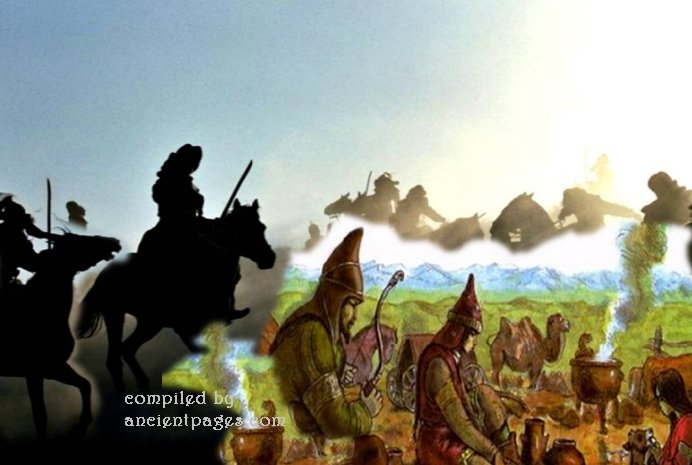Massagetae Tribe And Its Queen Tomyris Whose Victory Over Cyrus The Great Became A Legend
A. Sutherland - AncientPages.com - In his great work "Histories," Herodotus mentions an interesting historical event in 529 BC when Cyrus the Great II, the Elder (about 590 - 529 BC) - King of Persia from the Achaemenid dynasty - died.
From the records of Herodotus, the Massagetae crashed a vast army of Persians, then they captured the king himself, put him to death, and publicly humiliated him.
How did the pathetic incident for the ruler of Persia, Cyrus the Great happen?
It turns out that Cyrus II was continuously victorious until he attacked the Massagetae people, who, under Queen Tomyris, quickly ended the life story of this great historical figure.
Who Were These Extraordinary, Brave Massageteans?
The Massagetae (or Massageteans) is a shared name used by ancient sources to describe the Central Asian nomadic and semi-nomadic tribes in the descriptions of the Scythians. Under the name of the Scythians, there are most likely included many related tribes.
The most numerous of them were the Massagetae, whose Herodotus described in "The Histories."
"The people of this is [union of Massagetae] are numerous and warlike, live in the east on the other side of the river Arax (apparently, the Syr Darya )... For clothing and lifestyle massagets - like the Scythians. They fought on horseback and foot. Know both methods of war, fighting with bows and spears, and usually armed with axes.
All their items out of their gold and copper... they do not sow, feeding pets and fish, which deliver them in abundance Arax River. Milk is what they chiefly drink …The only god they worship is the sun."
The Massagetae inhabited the steppes of Central Asia, northeast of the Caspian Sea in modern Turkmenistan, western Uzbekistan, and southern Kazakhstan.
Their original language is still little-known, but it is assumed they spoke one of the Iranian languages. As to the origin of the Massageteans, there has been much debate among scholars, and numerous hypotheses exist about their identity and ethnic background.
Some have identified them with the Getae, a Thracian tribe inhabiting the Black Sea region of ancient Eastern Europe. Others linked them with the Gutians (or Guteans), a nomadic tribe from the northern and central ranges of the Zagros Mountains (now Iran) during ancient times. By many, the Massagetae are considered to be a Scythian race.
However, all these theories are not widely accepted.
Massagetae – Strong Nation Of Skilled Warriors
The Massagetae were said to be a great, strong, and warlike nation. When Cyrus, whose reign lasted about thirty years, had achieved the conquest of the Babylonians, he simply wanted more. He focused on campaigns in the east.
He did not want to start a risky or daring journey to Egypt.) He led a new expedition, which resulted in effective campaigns to subdue the provinces of Central Asia. Finally, he had to confront the Massagetae and bring them under his mighty dominion.
Herodotus writes, "Cyrus advanced a day's journey into Massagetan territory from the Araxes..."
Cyrus laid a trap by leaving his camp vulnerable, "leaving the worthless portion of his army in the camp, drew off with his good troops towards the river.
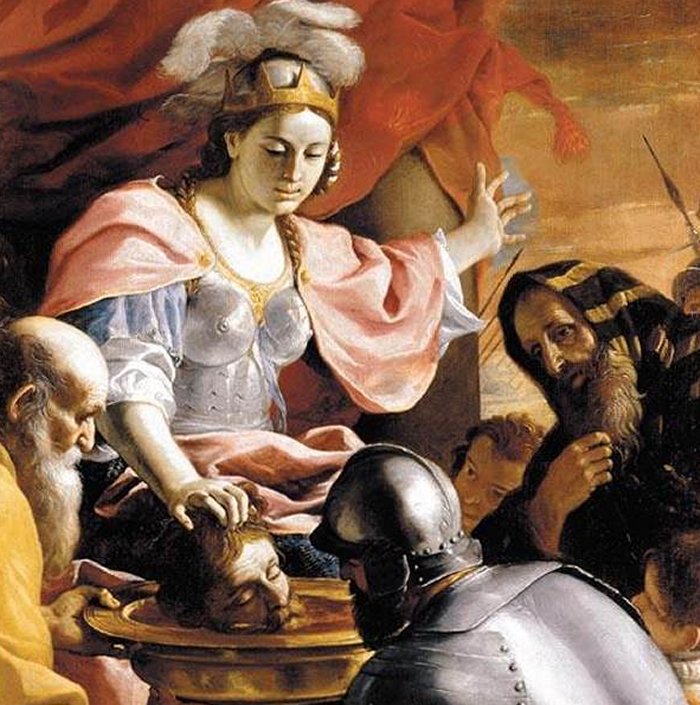 Queen Tomyris of the Massagetae receiving the head of Cyrus the Great. 1670-1672 painting. source
Queen Tomyris of the Massagetae receiving the head of Cyrus the Great. 1670-1672 painting. source
Soon afterward, a detachment of the Massagetai, one-third of their entire army, led by Spargapises, son of the queen Tomyris, coming up, fell upon the body which had been left behind by Cyrus and on their resistance put them to the sword. Then, seeing the banquet prepared, they sat down and began to feast. When they had eaten and drunk their fill and were now sunk in sleep, the Persians under Cyrus arrived."
Many of the Massagetae were killed, but even more taken prisoner, including Queen Tomyris's son, who was the commander of the army and whose name was Spargapises." ("Histories," 1.211)
During a short period of imprisonment, Spargapises realized his army's and his own careless mistakes. He begged Cyrus for freedom, and he was granted it. Once free, Spargapises committed suicide, perhaps in shame, humiliation, or to avoid capture.
Spargapises' mother, Tomyris, was furious; she gathered all her forces and engaged Cyrus in battle. It was strenuous and prolonged fighting. The Massagetae destroyed Cyrus' army and killed the Persian king.
On the other hand, in 'Stratagems in War,' Polyenus, a 2nd-century AD Macedonian author, writes:
"When Cyrus advanced against the Massagetae, Tomyris, their queen, retreated before him. The Persian army, closely pursuing her, entered and plundered her camp. There, they found a great quantity of wine and all sorts of provisions, on which they indulged immoderately, reveling throughout the night as if they had obtained a victory. In that situation, Tomyris attacked them and cut them to pieces, while they were partly buried in sleep, and partly so drenched with wine, and surfeited with banqueting, that they could scarcely stand upright; and Cyrus himself was slain..."
Written by – A. Sutherland - AncientPages.com Senior Staff Writer
Updated on September 6, 2024
Copyright © AncientPages.com All rights reserved. This material may not be published, broadcast, rewritten or redistributed in whole or part without the express written permission of AncientPages.com
Expand for referencesMore From Ancient Pages
-
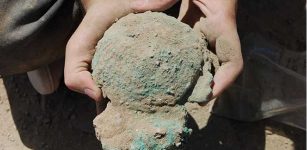 Rare Discovery Of 4,300-Year-Old Copper Ingots Left By Mistake In A Settlement In Oman
Archaeology | Jun 2, 2023
Rare Discovery Of 4,300-Year-Old Copper Ingots Left By Mistake In A Settlement In Oman
Archaeology | Jun 2, 2023 -
 Mysterious Undeciphered Ripley Scroll And Its Connection To The Philosopher’s Stone
Featured Stories | Mar 10, 2024
Mysterious Undeciphered Ripley Scroll And Its Connection To The Philosopher’s Stone
Featured Stories | Mar 10, 2024 -
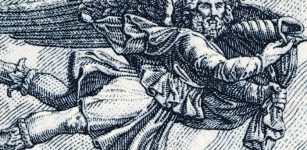 Boreas – Mighty North Wind God In Greek Mythology
Featured Stories | Mar 26, 2023
Boreas – Mighty North Wind God In Greek Mythology
Featured Stories | Mar 26, 2023 -
 Mysterious Voynich Manuscript Was Written In Two Languages – Scientists Say
Archaeology | Apr 24, 2017
Mysterious Voynich Manuscript Was Written In Two Languages – Scientists Say
Archaeology | Apr 24, 2017 -
 On This Day In History: Captain James Cook Spotted The East Coast Of Australia – On Apr 19, 1770
News | Apr 19, 2016
On This Day In History: Captain James Cook Spotted The East Coast Of Australia – On Apr 19, 1770
News | Apr 19, 2016 -
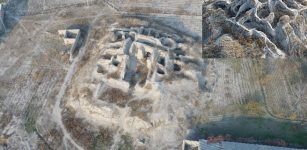 Sogdian Temple Of Jartepa II On Caravan Road Of The Silk Road
News | Sep 3, 2020
Sogdian Temple Of Jartepa II On Caravan Road Of The Silk Road
News | Sep 3, 2020 -
 Legendary Mount Penglai Where The Eight Immortals Reside
Chinese Mythology | Feb 20, 2018
Legendary Mount Penglai Where The Eight Immortals Reside
Chinese Mythology | Feb 20, 2018 -
 Was Spruce Hill In Ohio Home To An Ancient Lost Civilization? Traces Of Strong Fire Puzzle Scientists
Featured Stories | Jan 17, 2018
Was Spruce Hill In Ohio Home To An Ancient Lost Civilization? Traces Of Strong Fire Puzzle Scientists
Featured Stories | Jan 17, 2018 -
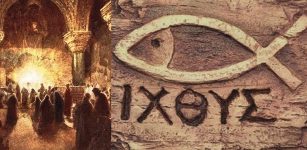 Mysterious Ichthys – Ancient Secret Christian Symbol With A Deep Meaning
Ancient Symbols | Mar 6, 2018
Mysterious Ichthys – Ancient Secret Christian Symbol With A Deep Meaning
Ancient Symbols | Mar 6, 2018 -
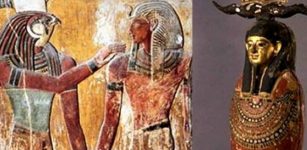 Sokar – Patron Deity Of Ancient Necropolis Of Memphis In Lower Egypt
Egyptian Mythology | Feb 19, 2019
Sokar – Patron Deity Of Ancient Necropolis Of Memphis In Lower Egypt
Egyptian Mythology | Feb 19, 2019 -
 Bill Of Rights 1689 – Enormous Historical Moment In English History
Ancient History Facts | May 6, 2019
Bill Of Rights 1689 – Enormous Historical Moment In English History
Ancient History Facts | May 6, 2019 -
 Ghostly Appearance Of Weird Ancient City Suspended In The Sky Witnessed By Many People
Featured Stories | Jul 9, 2019
Ghostly Appearance Of Weird Ancient City Suspended In The Sky Witnessed By Many People
Featured Stories | Jul 9, 2019 -
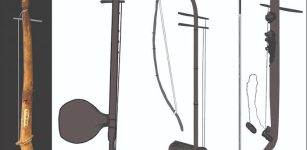 2,000-Year-Old Stringed Instrument Found In Vietnam
Archaeology | Feb 22, 2023
2,000-Year-Old Stringed Instrument Found In Vietnam
Archaeology | Feb 22, 2023 -
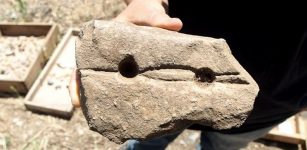 Stone Slab c. 9,000-Year-Old Used In Making Fire Discovered Not Far From Jerusalem, Israel
Archaeology | May 17, 2017
Stone Slab c. 9,000-Year-Old Used In Making Fire Discovered Not Far From Jerusalem, Israel
Archaeology | May 17, 2017 -
 Native Americans’ Unexplained Encounter With A Strange Underground Humanoid 500 Years Ago – Who Was This Being?
Featured Stories | Oct 31, 2024
Native Americans’ Unexplained Encounter With A Strange Underground Humanoid 500 Years Ago – Who Was This Being?
Featured Stories | Oct 31, 2024 -
 Egtved Girl’s Unique 3,400-Year-Old Style Of Dress
Featured Stories | Nov 17, 2023
Egtved Girl’s Unique 3,400-Year-Old Style Of Dress
Featured Stories | Nov 17, 2023 -
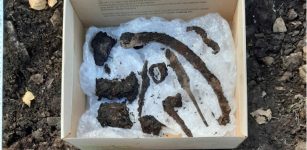 Viking Grave Discovered In The Middle Of Oslo, Norway
Archaeology | Dec 23, 2022
Viking Grave Discovered In The Middle Of Oslo, Norway
Archaeology | Dec 23, 2022 -
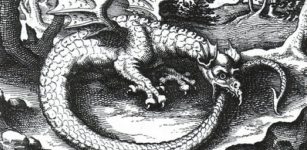 Ouroboros – Cosmic Serpent And The Self-Devourer – Universal, Powerful Symbol Of Great Antiquity
Ancient Symbols | Oct 22, 2017
Ouroboros – Cosmic Serpent And The Self-Devourer – Universal, Powerful Symbol Of Great Antiquity
Ancient Symbols | Oct 22, 2017 -
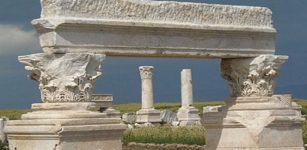 Christian Church And Large House Unearthed In Ancient Laodicea, A Major Hub Of Christianity
Archaeology | Oct 31, 2020
Christian Church And Large House Unearthed In Ancient Laodicea, A Major Hub Of Christianity
Archaeology | Oct 31, 2020 -
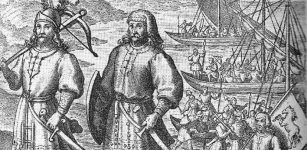 Hengist And Horsa: Legendary Anglo-Saxon Warrior Brothers And Leaders Of First Settlers In Britain
Featured Stories | May 28, 2016
Hengist And Horsa: Legendary Anglo-Saxon Warrior Brothers And Leaders Of First Settlers In Britain
Featured Stories | May 28, 2016

